
|
| Accept Cookies | Customize | Refuse Cookies |
Marco Belardi www.juzaphoto.com/p/MarcoBelardi  |
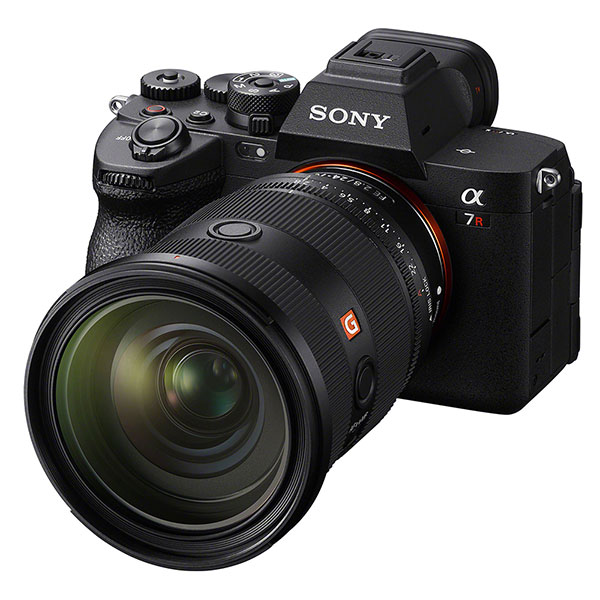 | Sony A7r V Pros: Ergonomic and proportionate body, improved drop-down menu, vari-angle rear screen, key layout and configurability, dynamic range and color management Cons: Incomprehensible abbreviations in the menu, CF express type A, slow burst Opinion: After a few years of Sony A7III I switched to this mirrorless and found some initial difficulties in the right button configuration. I haven't found enough reasons to be unhappy after months: the infamous Sony menu has improved considerably even if the abbreviations require you to deduct many steps; the Cf express type A is unfortunately much more expensive than its cousins type B; the burst at full megapixels requires the use of the Cf express without returning bursts adequate to sports photos or birdlife at medium-short distances. For the rest, a masterpiece of a camera: comfortable to hold, proportionate to large lenses, ideal for cropping in birdlife and even in macro. I haven't yet experimented enough with in-camera focus stacking or even the use of remapped megapixel Lossless files, just a few tests. The rear screen is a must have. A few backlit buttons wouldn't have hurt and bodies that do without them continue to be produced. The viewfinder is remarkably resolving, one would say "too much", in some situations there is a slight flicker. It's all about looking for the hair in the egg, great camera body, with the kind of safety and comfort in use that in the past I've only had with the D500 sent on February 09, 2024 |
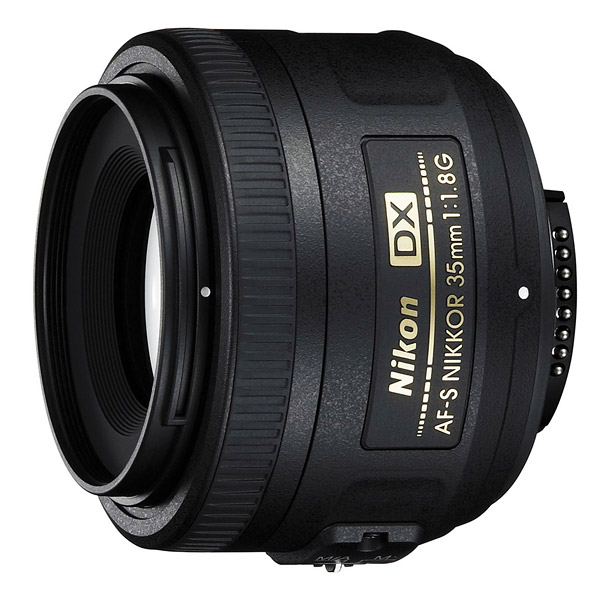 | Nikon AF-S DX 35mm f/1.8 G Pros: Size and weight, ideal lens to get closer to optical bright with entry level Cons: chromatic aberrations, construction, the focus ring, no focus of scale, autofocus Opinion: I recommend this lens to holders of entry level Nikon (from D3000 to D5600) who are thinking of approaching the bright fixed for the first time. First, it is a lens that does not count in filling a backpack: with an entry level course of small size, it is very discreet filming in town for Street Photography. Also it is in the pocket of any jacket, with due caution. The yield is not great, you have to consider the price and it is useless to compare it to the more expensive versions in circulation; However, it finding used around 130 Euros and again a little more than 200, is a good compromise between quality and price. Chromatic aberrations are ubiquitous especially at open aperture, the autofocus is noisy and slow and the associated ring, besides being tiny and cumbersome for lack of fluidity, does not have a corresponding visual scale nor proposes a good stroke end. Of course the object is definitely "plasticone" but I repeat, entersin the crack of a backpack in which you riporrebbe a ball head or pocket. sent on March 17, 2017 |
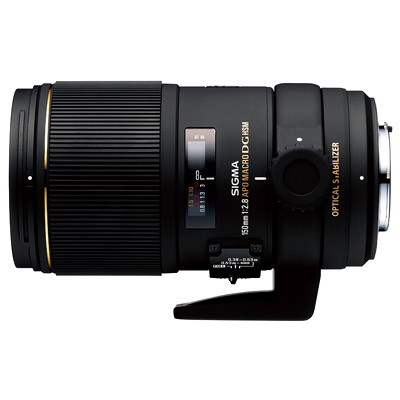 | Sigma 150mm f/2.8 EX DG OS HSM Macro Pros: Sharpness, build quality, presence of collar Cons: Some difficulties with autofocus in low light Opinion: I replaced my 105mm F2.8 Nikkor lens with this for the need to have a longer focal to eliminate the disturbing objects in the background, and especially because the collar from macro tripod is extremely convenient and useful, and allows to keep the stability that it has in the horizontal shutter (besides the fact that the tilting of the screen D500 is adjustable in one direction only). The weight is increased by a few pounds compared to where optical earlier I never complained, despite some of the stabilizer noise, not really performing. The build quality is impeccable, once the unseemly problem collar solved that impacted on 'autofocus of the first series, and the sharpness is good even at open aperture; if you are playing with Nikkor those intermediates, while the better I feel closed diaphragm and above all less suffering of chromatic aberrations. Also good color rendering. They went out of the known 180 mm with collar production, it remains the only capable optical -credo-to give a macro photographer / close-up tripod with the guarantee of a certain stability on the field, as well as providing a long in contrast to 'recent release of the medium-telephoto focal many as the current Tamron 90mm, or 100mm Zeiss 1 :2. sent on March 09, 2017 |
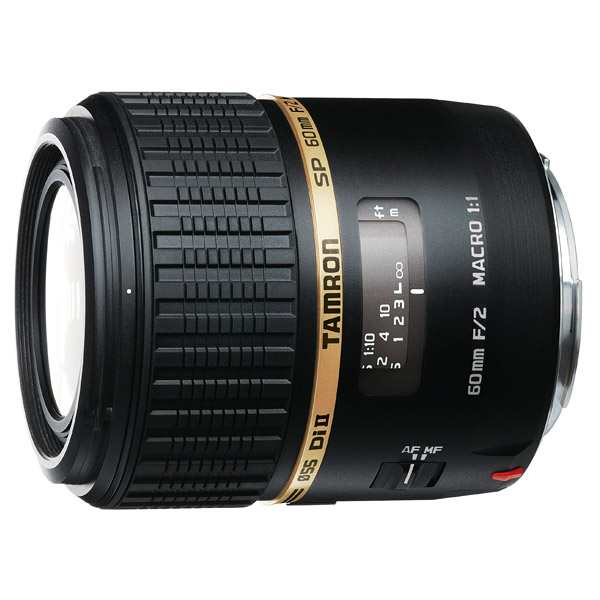 | Tamron SP 60mm f/2 Di II LD Macro Pros: Aperture, focus, internal focus, ring and scale of large and precise focus Cons: jerky ring, little rugged construction, noisy and slow autofocus, no focus limiter Opinion: I purchased this lens after the death of my Nikkor 60mm old model, or AF-D metal. The reason why I continue to support a macro to a long-short (the Sigma 150mm f2.8 stabilized) is I use the extension tubes to the fact that Nikon unfortunately we do not have a single copy in the 'magnifying like the Canon 65mm (up to 5: 1). My choice therefore fell on this ultralight and economic model of the Tamron, for APS-C, for a number of reasons: opening up to f2 aperture enviable making it also applicable to the picture, a good yield, the absence of the barrel in fuocheggiando extension, thus maintaining the distance between the end of the lens and the subject always constant in the maximum magnification, and low weight that make it assembled to Kenko extension tubes without fear of breakage. D 'on the other hand, is missing the feeling of total 60mm Nikkor old version robustness. The focus ring has a wide excursion well reported on the scale, which makes the manual focusing accurate and never approximate even without a micrometer slide (which in any case I use easel); the absence of a focus limiter was something that you could instead easily remedied. A free hand, the autofocus is very noisy and slow, in line with the low Tamron products price range. sent on February 22, 2017 |
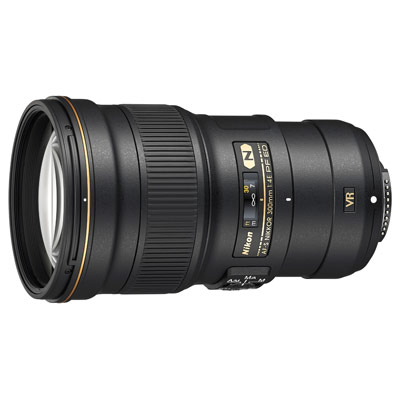 | Nikon AF-S 300mm f/4 E PF ED VR Pros: Resa, weight, speed, image stabilization Cons: Cost housing, lens hood Opinion: I replaced the old 300mm f4 with this version after exhausting labors try in itinerant photographic hunting. The lightness of this version makes it possible to use in: sports without a tripod or monopod, traveling photo hunt even trekking sessions, and stabilization, I underestimated at first, it allows the use of shutter speeds unthinkable. Personally, the first attempt I made home- -in a close-up of a flower at 1 / 40sec without there being the least moved. Unfortunately achieve a lens so light it cost something in terms of construction: lighter but certainly less robust, and the fixed hood flower to 'eye of the old version is here replaced by a standard, cumbersome and in my opinion not too solid. Custody, just like the previous one, is well crafted but less stuffed with some older versions combined with Nikon professional lenses. Fast autofocus, in conjunction with the D500 a true masterpiece, and stabilization, for me accustomed to the noisy of the 105mm f2.8 micror more and Nikkor home, -over which is versatile, in two extremely quiet and extremely effective modalità-. Highly recommended, although the higher price -temo- keep many people away from this object. sent on February 13, 2017 |
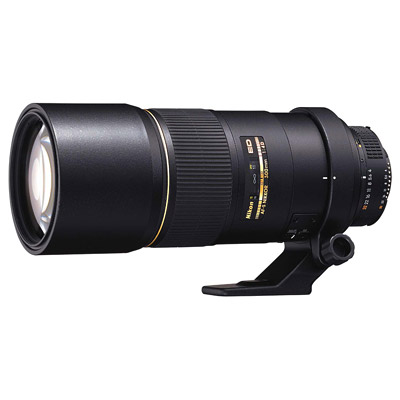 | Nikon AF-S 300mm f/4 D ED Pros: build quality, performance, built-in hood, minimum distance of MAF Cons: Relative slowness, weight, collar, custody Opinion: I have owned this super telephoto for three years, before moving to the new version stabilized and relieved even 7-8 ounces. I think it is absolutely one of the objectives that I have used more than ever, despite the limitations that presented to me by arranging for traveling photo hunting, I have never been able to take it with me for the medium / long trekking excursions, saw the incriminating weighing about a three pounds to weigh on the neck. However, in the huts a short distance from the bird watching perches I made frequent use in bird life, at best freehand, without much difficulty. In hunting camp instead emerged problems when shooting in manual focus and looking out from the viewfinder, the wait times were made long before a person to fly or to land from / on the roost chosen ... that suffering by the wrist! Used with limited success with a multiplier of 2x Kenko D7100, I found in that case an excessive loss of brightness (f8), excessive delays in 'already autofocus itself no lightning and difficulty à huge in 'lock on subjects in low light. The strengths of this lens are made, the minimum focusing distance that deliver great close-ups even with subjects not particularly large, and the fixed hood, well proportioned and simply plug sending him forward, and turning it to the point of the block. You can not lose it or break it. The housing, in line with the new model, it seemed less professional and robust of some old versions which I have observed in the past, and given in combination with high-level Nikkor lenses. sent on February 13, 2017 |
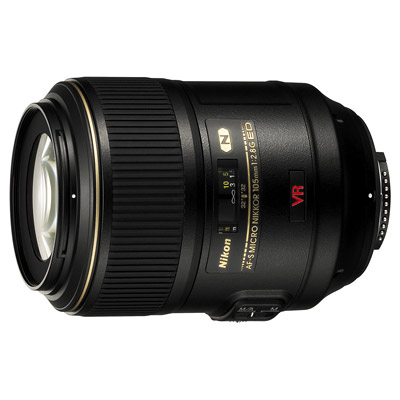 | Nikon AF-S 105mm f/2.8 G ED VR Micro Pros: Versatility of use free hand / stand Cons: high cost for a lens which has over ten years Opinion: I state that I have used this lens only in macro and close-up and practically very little in portrait. The Nikkor 105mm has been my lens for macro for four years, and the objective that I have used more than ever. Excellent bokeh, good sharpness. A free hand with stabilizer function I noticed some noise, nothing great, but there. The weight makes it indicated on machines such as D7000 (and the two upper) or D300 / D500, while on slight entry level there is a certain imbalance, and the absence of a collar for the tripod does not make it completely suitable for shooting from a tripod. In a couple of cases I've also used for landscape photography and I was impressed by the results. Incomprehensible as it were to figures more acceptable in 2013 when I bought it than it is now, with the same type of guarantee. For over 10 years, would require a revision of prices or a new edition. sent on February 12, 2017 |
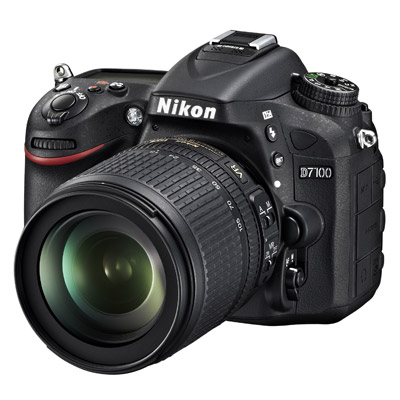 | Nikon D7100 Pros: Building, housing two SD card, good layout of the controls, sensor Cons: Seal of ISO, buffers Opinion: See among the discontinued a 2013 camera body does reflect on how a new object becomes obsolete quickly ... it seems like yesterday the day when I bought it and was testing the 6400 ISO photographing my cat in the room. I no longer have this camera body being past (recently) to D500, but I've used it for almost four years and I was pretty happy. The problem is that the evolution of the D7000 was not exactly what many owners of APS-C asked. A great voice, in fact, even then it required a successor of D300, which is a body with "small" sensor, but professional and efficient. D7000, however, was not so old as to require an immediate upgrade! Two SD card slots were immediately comfortable. Burst enough, not compensated by a buffer that was filled right away making it impossible to realize more than six consecutive shots with memory cards "normal." Absurd to take a body midrange car and then match them more expensive for Lexar ridurre writing those delays ... The 24mpx sensor is great, returns raw files between 24MB and 38MB absolutely manageable (personally I have always worked with them a great ASUS, however, dated 7-8 years, in Lightroom and Photoshop). The control layout is valid while positioning the ISO button next to the live view and not at the top, next to the small LCD, where he would find the most logical of housing (which will happen, for example, D500). Ironically, it is not thought to add to this body of the machine the swivel screen that was present instead of D5100: a macro I would serve as the bread on the table ... this however the crop-on-room x1.3, function It lightens the files and performs a pre-post production crop. I'm not at all satisfied with the noise kept up to ISO 1600 you get a good detail and texture are very limited, then have problems. In 3200 the files are often manageable, but the detail starts to drop. At ISO 6400 and above as well we not talk about it, but one has to consider that he spokein a body of non-professional machine, still it sold at about a thousand Euro in 2013. sent on February 03, 2017 |
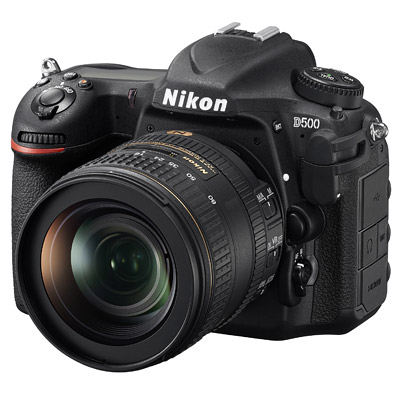 | Nikon D500 Pros: Construction, speed, autofocus, noise management, adjustable screen, large viewfinder, possibility to cover the viewfinder, control layout Cons: swivel the display in one direction, management of WI-FI, Ten-pin remote control, flash shoe cover not supplied on a body of over 2000 Euros Opinion: Fantastic reflex. I always thought of staying on APS-C format and the previous D7100 did not satisfy my needs in speed, holding the ISO, autofocus. In this case everything has been obviously improved, the body's level is professional and it feels right from the first handle. Excellent command management, with ISO button next to last in the upper position of 'exposure compensation, and not next to the live view. Noise estate is wonderful in my opinion and for my needs: file with a high quality up to 3200, good up to 6400, I held the photo to 10000-12800 without passing devote an exhausting process. The flurry to 10fps is supported by a buffer finally worthy, and the double slot is finally accompanied by a XQD beside the classical SD. Unfortunately, operating the remote latch is ten poles, and forced to 'purchase of expensive models such as MC-30 if you do not want to fall back on imitations (tried one, found poor construction and functionality). The returnthe swivel screen is handy in macro photography and other situations, although unfortunately with the chamber placed vertically, is rotatable along a single axis (horizontal). There is also the option of coverage viewfinder using a lever at his side, replacing the uncomfortable plastic cover eye. Unfortunately Nikon not 'covers, slide the flash provided. The WI-FI is very bad but I find the realization of SnapBridge especially for limited functionality remotely shooting mode. Other highlights include an auto focus, fast and accurate with an ease to hook the subjects in low light finally not limited to the central point. sent on January 28, 2017 |
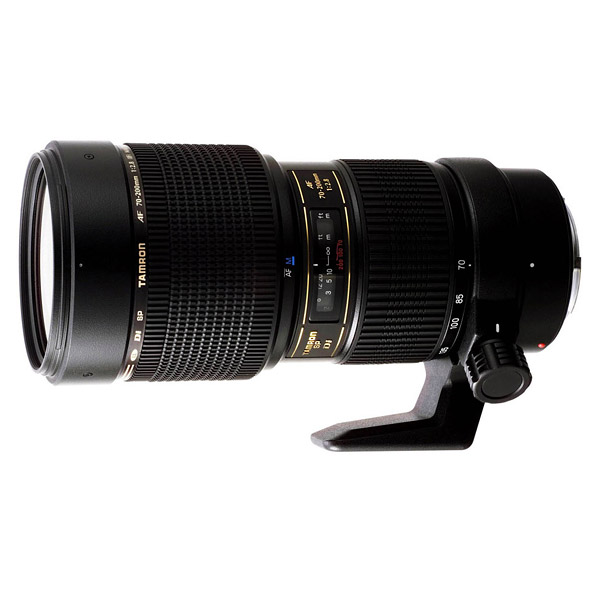 | Tamron SP 70-200mm f/2.8 Di LD Pros: Color rendering and sharpness, weight Cons: autofocus Opinion: For the uses that are made of a 70-200mm, I find it especially suitable for portrait where he made a definitely a good level. Personally I've used a lot of tripod for photography landscape, where long lenses were necessary even though I was on APS-C format. In the specific cases for which I'd gotten, however, that photograph of concerts and sports, has been a subject rarely suitable for both problems in fuocheggiare in low light conditions, both for the incredible slowness of the internal autofocus (equivalent the Nikon AF-D for instance). sent on January 28, 2017 |
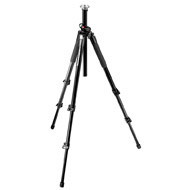 | Manfrotto 055 X PROB Pros: Stability, reversible column. Cons: Weight and size. Opinion: This was my first tripod, bought for 130 euro in 2012. I had no regrets for a long time to the point of opting for stable objects but carbon. This model proved immediately very stable, even in windy conditions, and reversible column has helped me a lot in macro photography for ground clearance shots. However, the overall dimensions when closed is not particularly low, and the high weight makes long journeys a living hell. Purchase separately a case that I found disproportionate and little protective. sent on January 28, 2017 |
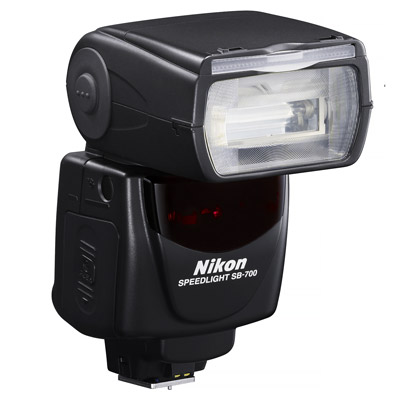 | Nikon SB-700 AF Speedlight Pros: Provided, dish, features, quality. Cons: Power, recharge times, custody, weight. Opinion: My first and only flash, so far. After considering end models and lower prices, I chose the 'SB700 which, although not comparable to the top of the range Nikon powerful, was revealed in 2012 a good element. I never thought of changing it so far: the equipment is very good, with frame, plastic screen and two filters (green and orange), while the case has little protective and spaces are too precise. In this way, put everything in its place is really uncomfortable and a possible trigger can not be kept absolutely at his side, nor with the receiver. The adjustable reflector is definitely a strong point, as well as the large display which offers good customization. Also appreciable yield, as well as the TTL body Dialogue car I had at the 'use with D7100 and D500. Charging times, very slow in some cases and the guide number rather limited, however, they have given me many problems. I find the flash also slightly heavy, especially with lighter camera bodies. sent on January 28, 2017 |
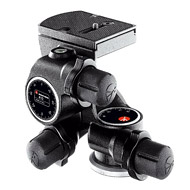 | Manfrotto 410 Pros: Accuracy, quality construction Cons: Manfrotto coupling, weight, height Opinion: I used this head for over two years in macros and in rare cases, still life. Its advantages are not trivial: incredible accuracy in the composition, reliability and quality construction make it an object of appropriate cost performance. However, the weight makes it necessary to use a very stable tripod or in some cases even heavy, not so much a question of what extent of unbalance. The movements can be uncomfortable, therefore, as in my case by embarking on a Manfrotto XPROB. In addition, the ride height will be compromised by its 13 cm. requiring in many cases to make do with a possible reversible column (always to the detriment of the stability). The Manfrotto attacks, finally, require an adapter if under the collar / body wants to hold a Swiss Arca plate. Recommended, but with its limits. sent on January 28, 2017 |
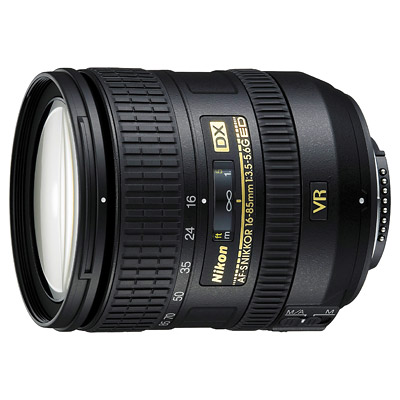 | Nikon AF-S DX 16-85mm f/3.5-5.6 G ED VR Pros: Sharpness, weight / size, focal length range that includes the 16mm to its first end Cons: Scale of the lack of detail focus, brightness Opinion: After you have had for some time from the 18-55mm kit D5100, I chose this handyman that I held for over four years and has proved a great traveling companion. Long used with filters (polarizer, IR and ND), in the landscape and in the long exposures, the 16-85mm proved a fiasco only in portrait, where he also focal right, but as the older brother 16-80mm, the highest focal does not have sufficient aperture. Fortunately, compared to the big brother, it has a cost much lower (paid around 560 Euros in 2012-2013) and allows those who are at about the average cost equipment to take home an object with astonishing clarity. Fantastic yield of D7100. Unfortunately, Nikon has not yet designed a worthy successor of 'outdated 17-55 f2.8 for APS-C format. sent on January 28, 2017 |
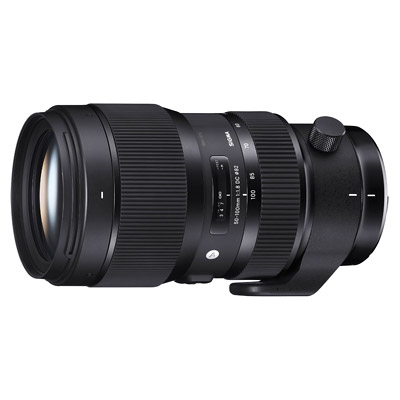 | Sigma 50-100mm f/1.8 DC HSM Art Pros: Opening record of the entire zoom range, quality in terms of yield and constructive, price. Cons: Weight. Opinion: I purchased this objective in combination with the 18-35mm f1.8 always home Sigma, to fix the classical zoom kit with two objects in total instead of a single all-rounder. Previously, I had the 16-85mm Nikon. In this way, I accept the small but significant chasm between 36mm and 48mm, but gain an incredible brightness not typical of the zoom, and especially did not expect was translated into actual goals especially for the APS-C format. Sigma did, and at low cost because of the quality achieved. The 50-100mm is a discreet boulder while not stabilized, has a weight similar to that of 300mm f4 IF-ED Nikon that I've used for over three years and almost always by hand. So not very comfortable, but I used it for about 150 minutes of concert in December, despite a 'half-hour central interruption, and arrived at the bottom alive and well. Autofocus fast, quiet and free of the front-back focus problems, in any case I purchased the Sigma USB dock to remedy any problems, upgradeof necessity the firmware, and perform calibration over time if it were needed. Also excellent hood, well built and engages with a loud "clack", without any particular games. The behavior is also excellent at open aperture. I wonder simply because to have two optical quality zoom to APS-C, after the release and the subsequent boom in D500, you either had to wait for a home as Sigma (which had already produced earlier 18-35mm) while Nikon is limited to updating the building the 16-85mm 16-80mm with little more brightness, more plasticona construction and a crazy price, when the 17-55mm DX requires a serious upgrade for a lifetime. sent on January 27, 2017 |
 JuzaPhoto contains affiliate links from Amazon and Ebay and JuzaPhoto earn a commission in case of purchase through affiliate links.
JuzaPhoto contains affiliate links from Amazon and Ebay and JuzaPhoto earn a commission in case of purchase through affiliate links.May Beauty Be Everywhere Around Me